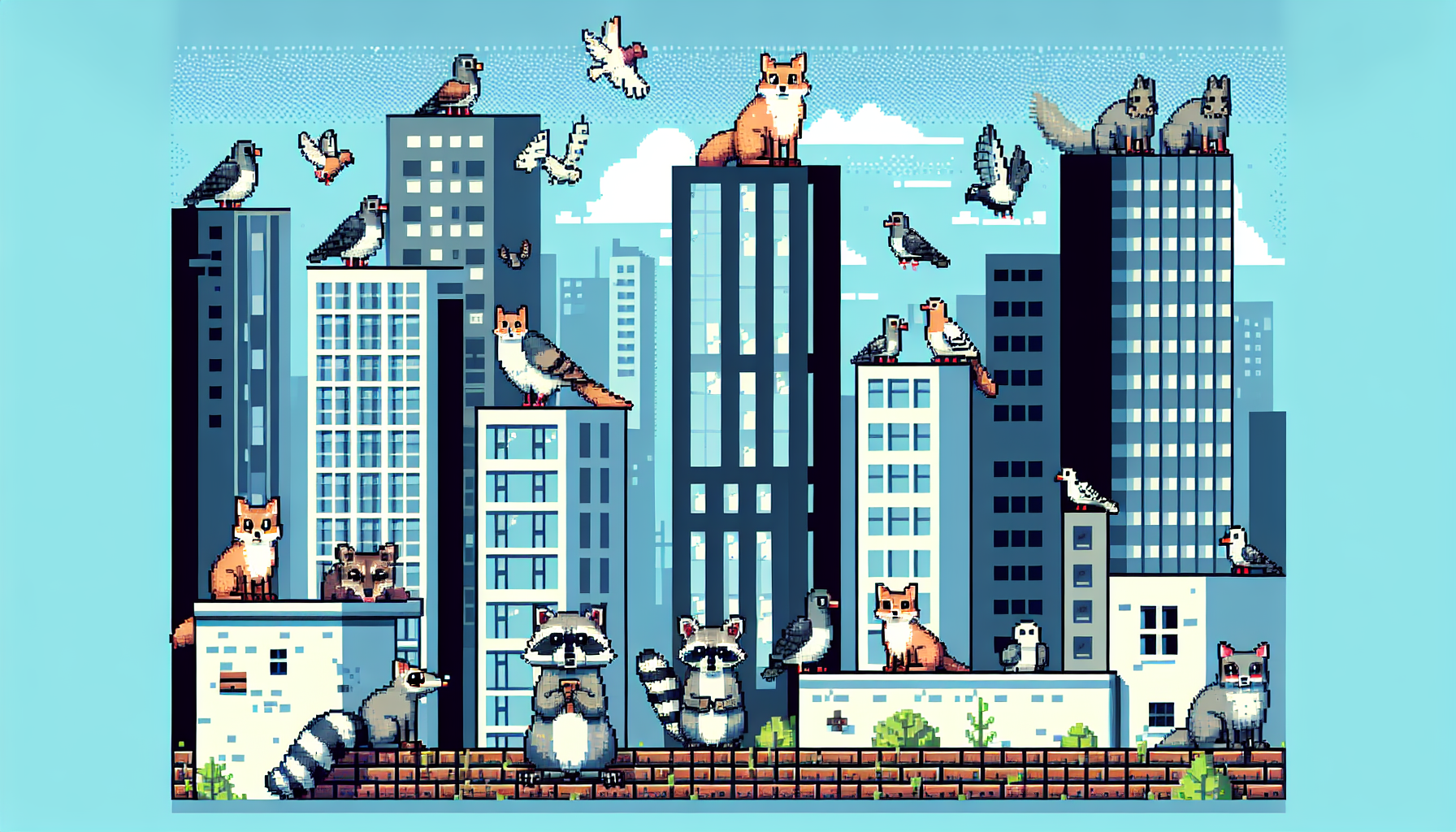Urban landscapes are typically characterized by concrete jungles, high-speed cars, and towering skyscrapers. Amidst the hustle and bustle, you might be surprised to find an abundance of wildlife, ranging from small insects and birds to larger mammals like deer, foxes, and occasionally, even coyotes.
Recent research shows that urban environments are often biodiversity hotspots.
Contrary to traditional belief, cities don’t merely repel wildlife; instead, they attract a diverse array of species. Urban parks, green roofs, backyard gardens, and man-made bodies of water serve as habitats for various wildlife species. Even the smallest patches of green can provide a refuge for urban flora and fauna.
Birds are a common sight in urban settings. Species like sparrows, pigeons, and crows have adapted well to city life.
They have learned to forage for food in trash bins, nest in building crevices, and navigate the concrete jungle with ease. Cities also play host to migratory birds, providing vital habitats along their migration routes.
In addition, mammals have found ways to inhabit the urban jungle. Foxes, raccoons, and opossums are frequently spotted in city environments, scavenging food from trash cans and making homes in urban parks and green spaces. They have become nocturnal creatures, active during the quieter hours of the night when human activity is minimal.
Urban wildlife provides several benefits to city dwellers. For one, they contribute to the local ecosystem’s balance by playing essential roles such as pollination and pest control.
Birds, bees, and bats aid in pollinating plants, while predatory species like spiders and birds of prey help keep the pest population in check.
Moreover, the presence of wildlife adds to the aesthetic appeal of cities, making them more enjoyable and relaxing places to live.
Many urban residents find joy in birdwatching and enjoy the occasional sightings of mammals like squirrels and rabbits.
However, urban wildlife is not without its challenges. Some species can become nuisances, damaging property, spreading diseases, and creating noise disturbances.

Cities worldwide are grappling with the issue of cohabitation, striving to create urban landscapes that can support both human and wildlife inhabitants.
Effective strategies for managing urban wildlife involve a mixture of tolerance, wildlife-proofing properties, humane deterrence, and fostering a deeper understanding of these creatures and their needs.
It’s crucial to remember that these animals are not intruders; they are fellow inhabitants of the urban environment.
Our goal should not be to remove wildlife from cities but to establish a delicate balance where humans and animals can coexist. To achieve this, it’s important for urban planners to incorporate green spaces and wildlife-friendly landscaping in city designs.
Educating the public about urban wildlife is also a key component.
Understanding the behaviors and needs of these creatures can foster greater appreciation and help mitigate conflicts.
Today, urban wildlife is a fascinating testament to nature’s adaptability.
The existence of these creatures in our cities serves as a reminder that even in the midst of urbanization, nature finds a way. This coexistence is a delicate balance, a dance of survival and adaptation, and a celebration of the enduring resilience of the natural world.